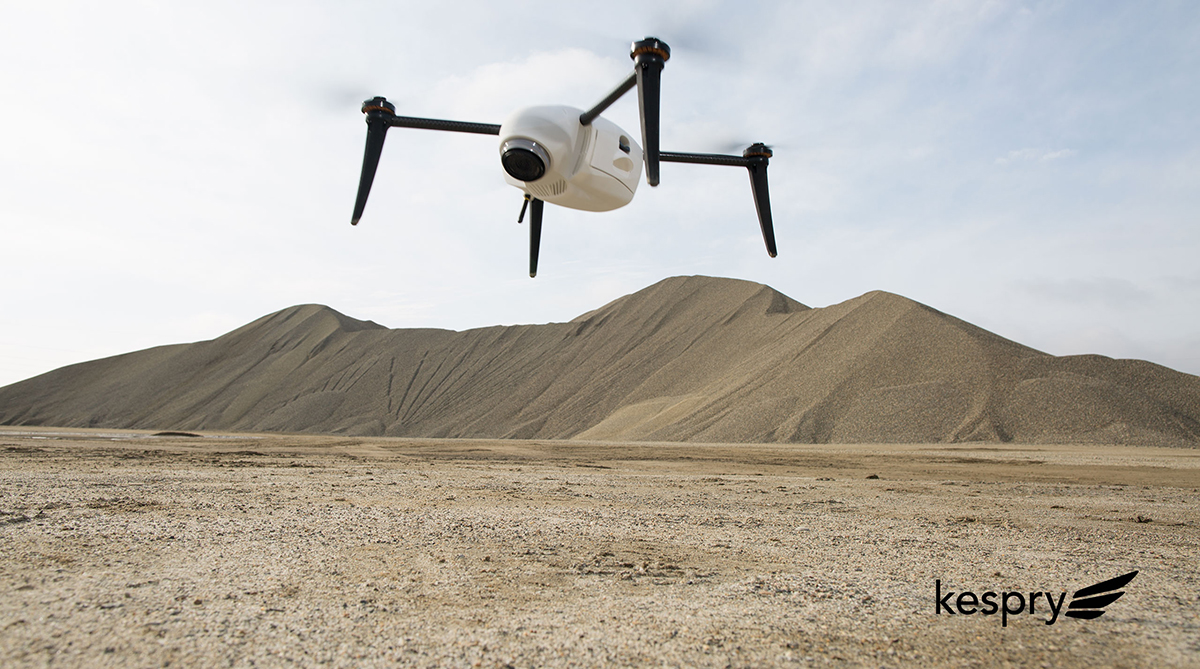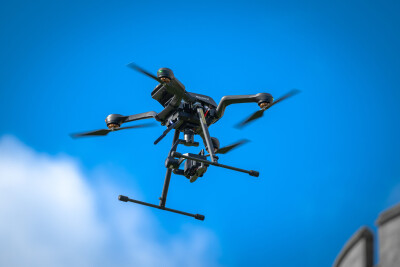Kespry’s announcement of an expansion to their executive team represented a major evolution for the company. In Jitender Aswani and Jim Allison, the company now finds itself in a unique position as they continue to enhance an aerial intelligence platform that’s an end-to-end solution, which is something Kespry CEO George Mathew identified as a focus. Being able to do so has and will rely on the data that their solution gathers and processes, and that focus on data ties into the evolution this new team is focused on enabling.

Jim Allison
As the newly appointed VP of Engineering, Jim Allison has plenty of insight around how data can drive an organization and an entire industry. He has more than twenty years of experience in engineering development with high growth companies, and most recently was on the consumer side of the drone industry. His experience in that space is just one of the factors that will play into his plans for Kespry and their customers.
Allison
laid out why he’s made the move to focus on the enterprise after being focused on the consumer for most of his career, but we wanted to learn more about why he considers Kespry to represent such a unique opportunity. In the interview below, we discuss his recent experience at Lily Robotics, how he defines a complete drone solution, what role
Kespry will have in the future of the industry and plenty more.
Click here to read an interview with Jitender Aswani. Jeremiah Karpowicz: In what ways will you be relying on your more than twenty years of experience in engineering development to ensure the Kespry solution remains one that’s easy for customers to use right out of the box? Jim Allison: I’ll be leveraging years of experience in software, artificial intelligence, integrated systems and robotics to realize the Kespry vision of autonomy that delivers significant advantage in realized customer value vs. required drone expertise. Kespry enables the customer to be an expert in their domain and achieve maximum value in drone-enabled data capture and analytics, without becoming a drone expert.
We have a maniacal focus on simplicity and ease of use. We achieve this by digging deep into the most frequent use cases of Kespry customers to determine the right features, their relative priorities and the most effective way to present them.
Kespry has always been diligent about making sure only very high quality hardware and software that has met some stringent standards is released to customers. I plan to continue that trend and find ways for us to keep improving with a full end-to-end, systems integration approach to testing, launch readiness and the ability of the Kespry analytics pipeline to scale with customer growth.
As I’m sure you can appreciate, there are some complicated challenges within this scope, which is where the insight that comes from multiple successful iterations leading diverse technical teams and delivering market-leading products will come into play. I’m looking forward to the challenge.
I’d be remiss if I didn’t ask about your time with Lily Robotics, as the company created some major headlines earlier this year. What were your biggest takeaways from that experience? Lily had a bold vision. Autonomous drones are complicated and the team ran into challenges that needed time to resolve. I joined the team a little too late and, while attempting to recover and deliver on the original vision, we ran out of runway and adequate funding to complete product development. Delivering truly autonomous drones is a very difficult technical challenge. The companies that get this right (and Kespry is one) have a significant competitive advantage in the marketplace. Lily was a consumer company and while I have spent much of my career working in consumer markets, it became clear that the value of drones will be harvested in the enterprise market, specifically in industrial segments. Sensor networks that capture data and feed it into data analytics platforms enabling businesses to reduce costs, increase safety and improve profitability offer incredible advantages to companies that embrace them. I’m very much looking forward to bringing my many years of experience prior to Lily and hard lessons learned at Lily together to drive success for Kespry and Kespry customers.
The concept of a “complete drone solution” is one that comes up in various contexts, but I’ve found that many define what this system looks like in a different way. How do you define a complete drone solution, and what makes Kespry’s offering distinct?I consider a “complete drone solution” as including everything necessary (hardware, software, services) to provide a customer with an end-to-end solution (it has to enable the user to derive domain specific business value without putting the parts together themselves) and then supporting those customers in the field. Only in this way can you ensure a truly integrated experience with maximum ease of use, reliability and customer satisfaction.
This is difficult because it requires hardware, software for flight planning, image and analytics capture, photogrammetry, cloud storage, 3D visualization and reporting all to work well together. Furthermore, it requires a level of accuracy that many consumer-grade products lack. Kespry’s offering is distinct by being both vertically integrated and designed with enterprise-level accuracy and autonomy in mind. The entire technology stack from the hardware, to the system software, to the mobile mission planning app, through the scalable cloud platform supporting photogrammetry, analytics, storage and vertical market applications are under Kespry control. Because of this, we’re able to deliver a product that provides true end-to-end value and friction free focus on business outcomes for the customer.
Kespry VP of Marketing David Shearer mentioned to me that Kespry is actually more of a data company than a drone company, and that’s an important distinction to make. What does Kespry’s position as a data company mean to you?To me, it means that the long term value of our company and the value of our product to our customers is about the data that we can help them capture and the insight that we can help them gain from it.
Is this transformation more about recognizing the needs of Kespry customers, or about creating a unique value proposition for them? It’s really both at the same time. Recognizing that the long term value is about the data means that we are taking steps to plan for large volumes of data and to unlock the value in that data for our customers. For example:
- We are designing our platform to leverage “best in class” cloud service providers enabling us to scale with “big data” volumes.
- We are delivering vertical applications for key segments, which allow our customers to access, visualize and manipulate their data in ways that compliment the best parts of their current workflows.
- We are providing an open API that our customers and third parties can use to feed data into our pipeline, customize vertical applications, deploy their own machine learning algorithms to gain new insight, and harvest data and insight for their own applications.
However, our unique value proposition is not just about how we make data more usable and more valuable downstream. The reliability of data accuracy and ease of capture in the field are also incredibly important. That is why we continue to have such commitment to the drone, enterprise-level accuracy and autonomous flight that democratizes the ability for anyone in the organization to collect very high quality field data.
What has you excited about the future of the drone industry, and what role will Kespry play in that future?I am excited because I see a future where autonomous drones have a significant impact on many markets including delivery, sports and entertainment, security and of course industrial applications like mining, construction, insurance and energy. Kespry will continue to focus on industrial applications and has the opportunity to derive significant business value from insights gained in the field. Partnering with the leading businesses in these markets will be a unique opportunity to learn, grow and innovate.
















Comments